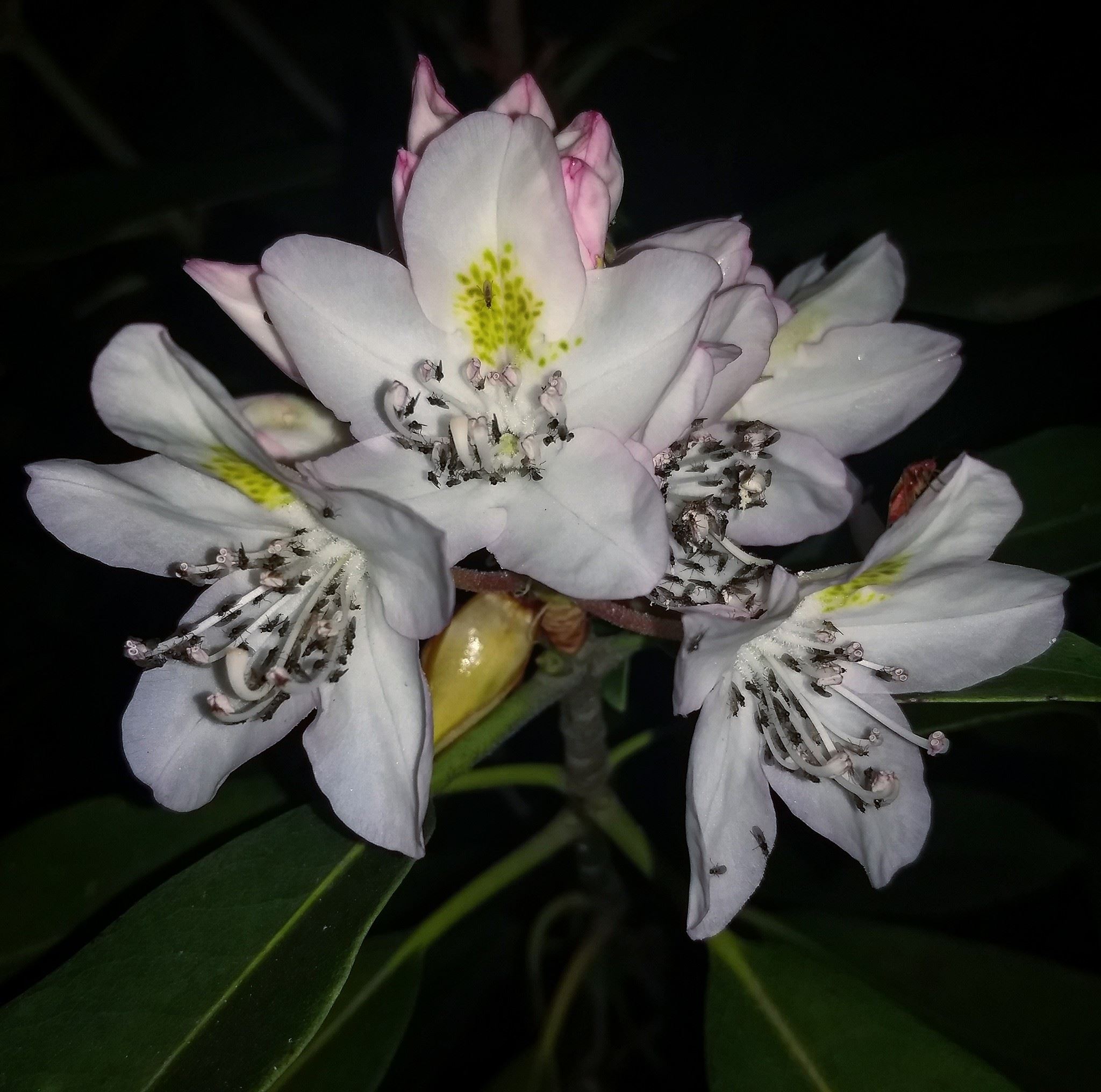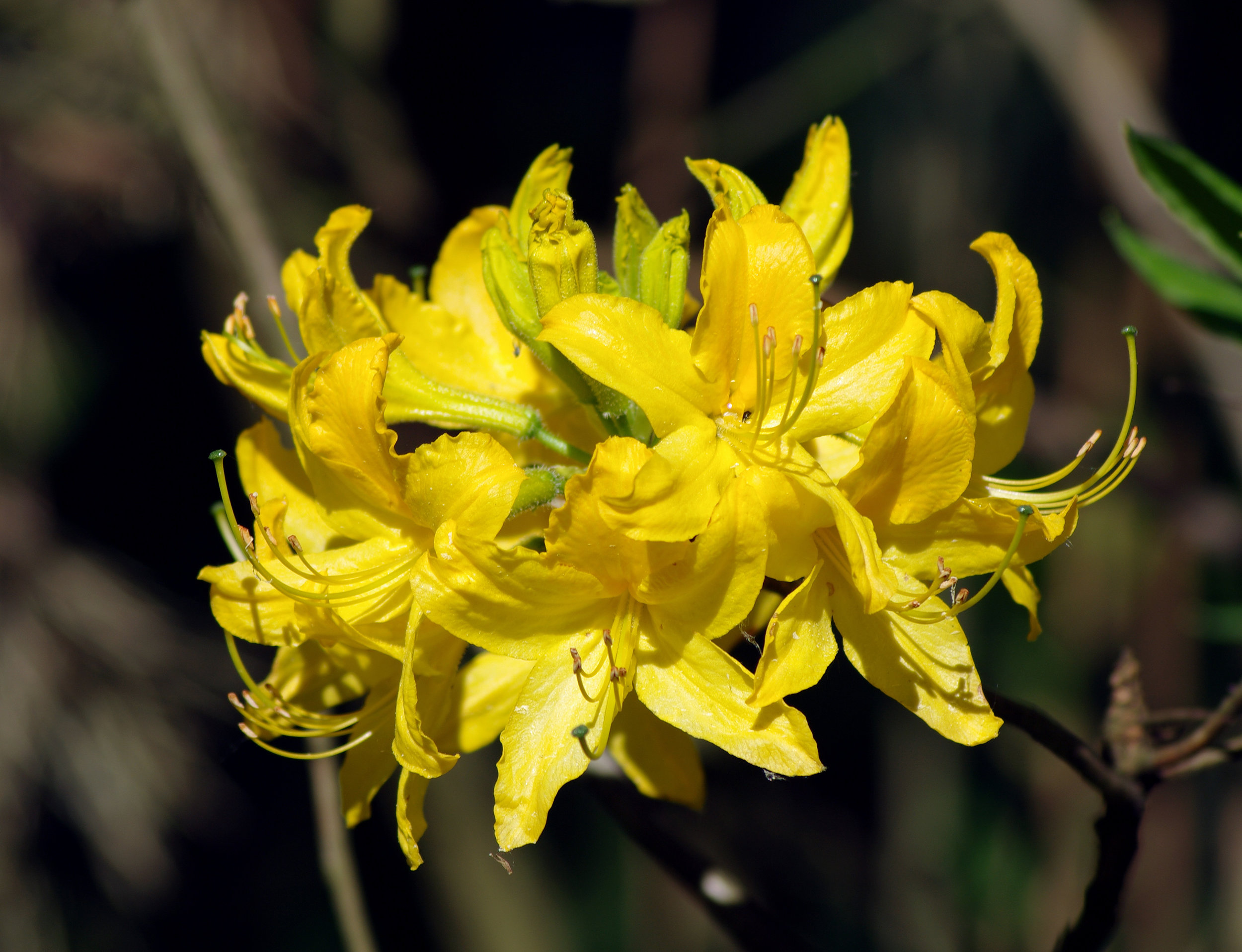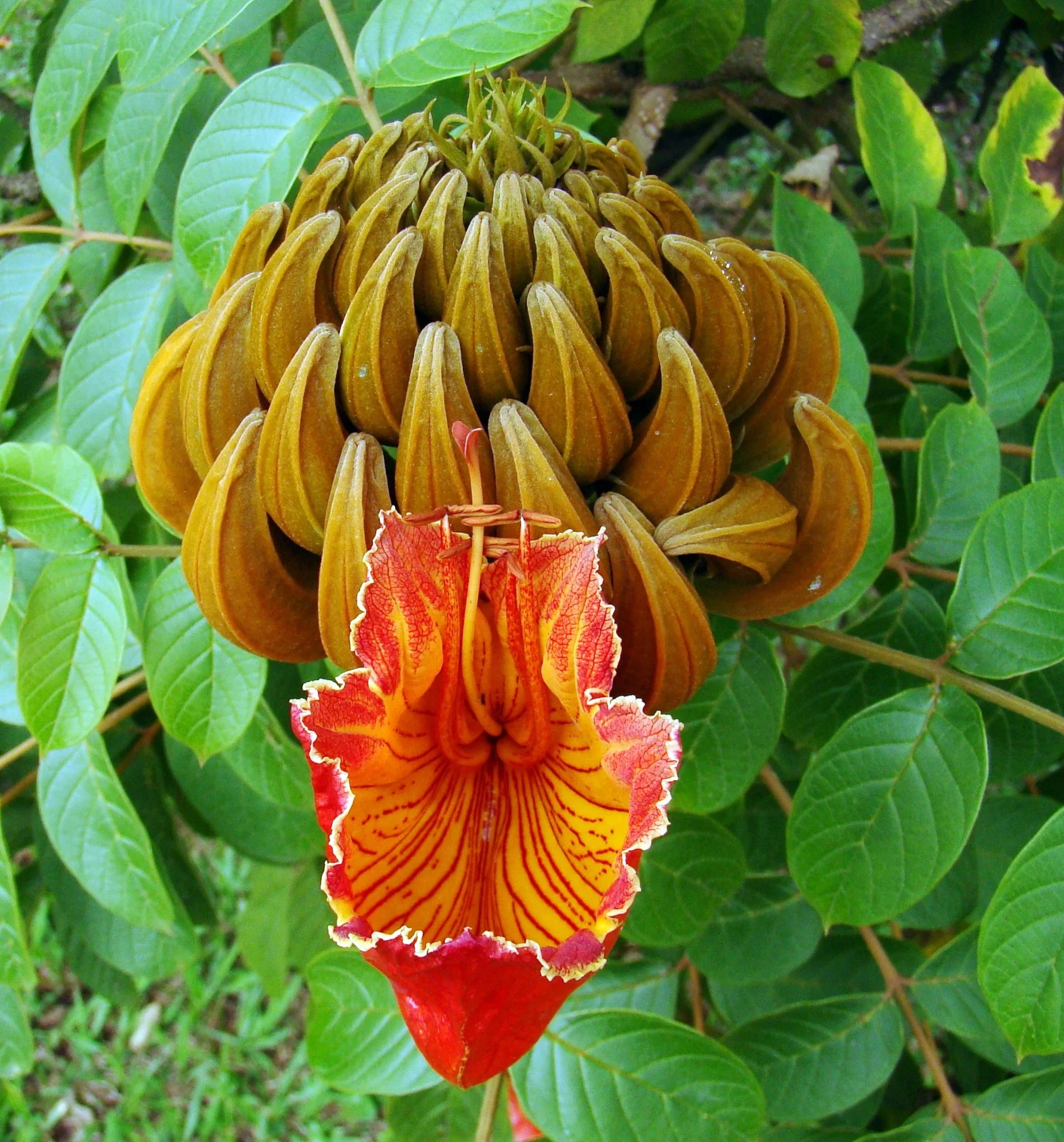I was introduced to the concept of toxic nectar thanks to a species of shrub quite familiar to anyone who has spent time in the Appalachian Mountains. Locals will tell you to never place honeybee hives near a patch of rosebay (Rhododendron maximum) for fear of so-called "mad honey." Needless to say, the concept intrigued me.
A quick internet search revealed that this is not a new phenomenon either. Humans have known about toxic nectar for thousands of years. In fact, honey made from feeding bees on species like Rhododendron luteum and R. ponticum has been used more than once during times of war. Hives containing toxic honey would be placed along known routs of Roman soldiers and, after consuming the seemingly innocuous treat, the soldiers would collapse into a stupor only to be slaughtered by armies lying in wait.
The presence of toxic nectar seems quite confusing. The primary function of nectar is to serve as a reward for pollinators after all. Why on Earth would a plant pump potentially harmful substances into its flowers?
It is worth mentioning at this point that the Rhododendrons aren't alone. A multitude of plant species produce toxic nectar. The chemicals that make them toxic, though poorly understood, vary almost as much as the plants that make them. Although there have been repeated investigations into this phenomenon, the exact reason(s) remain elusive to this day. Still, research has drummed up some interesting data and many great hypotheses aimed at explaining the patterns.
Catalpa nectar has been shown to deter some ants and butterflies but not large bees. Photo by Le.Loup.Gris licensed under CC BY-SA 3.0
The earliest investigations into toxic nectar gave birth to the pollinator fidelity hypothesis. Researchers realized that meany bees appear to be less sensitive to alkaloids in nectar than are some Lepidopterans. This led to speculation that perhaps some plants pump toxic compounds into their nectar to deter inefficient pollinators, leading to more specialization among pollinating insects that can handle the toxins.
Another hypothesis is the nectar robber hypothesis. This hypothesis is quite similar to the pollinator fidelity hypothesis except that it extends to all organisms that could potentially rob nectar from a flower without providing any pollination services. As such, it is a matter of plant defense.
The nectar of Cyrilla racemiflora is thought to be toxic to some bees. Photo by Koala:Bear licensed under CC BY-SA 2.0
Others feel that toxic nectar may be less about pollinators or nectar robbers and more about microbial activity. Sugary nectar can be a breeding ground for microbes and it is possible that plants pump toxic compounds into their nectar to keep it "fresh." If this is the case, the antimicrobial benefits could outweigh the cost to pollinators that may be harmed or even deterred by the toxic compounds.
Finally, it could be that toxic nectar may have no benefit to the plant whatsoever. Perhaps toxic nectar is simply the result of selection for defense compounds elsewhere in the plant and therefore is expressed in the nectar as a result of pleiotropy. If this is the case then toxic nectar might not be under as strong selection pressures as is overall defense against herbivores. If so, the plants may not be able to control which compounds eventually end up in their nectar. Provided defense against herbivores outweighs any costs imposed by toxic nectar then plants may not have the ability to evolve away from such traits.
Where Spathodea campanulata is invasive, its nectar causes increased mortality in native bee hives. Photo by mauro halpern licensed under CC BY 2.0
So, where does the science land us with these hypotheses? Do the data support any of these theories? This is where things get cloudy. Despite plenty of interest, evidence in support of the various hypotheses is scant. Some experiments have shown that indeed, when given a choice, some bees prefer non-toxic to toxic nectar. Also, toxic nectar appears to dissuade some ants from visiting flowers, however, just as many experiments have demonstrated no discernible effect on bees or ants. What's more, at least one investigation found that the amount of toxic compounds within the nectar of certain species varies significantly from population to population. What this means for pollination is anyone's' guess.
It is worth noting that most of the pollination-related hypotheses about toxic nectar have been tested using honeybees. Because they are generalist pollinators, there could be something to be said about toxic nectar deterring generalist pollinators in favor of specialist pollinators. Still, these experiments have largely been done in regions where honeybees are not native and therefore do not represent natural conditions.
Simply put, it is still too early to say whether toxic nectar is adaptive or not. It could very well be that it does not impose enough of a negative effect on plant fitness to evolve away from. More work is certainly needed. So, if you are someone looking for an excellent thesis project, here is a great opportunity. In the mean time, do yourself a favor and don't eat any mad honey.
Photo Credits: [1] [2] [3] [4]
Further Reading: [1] [2] [3] [4] [5] [6]




